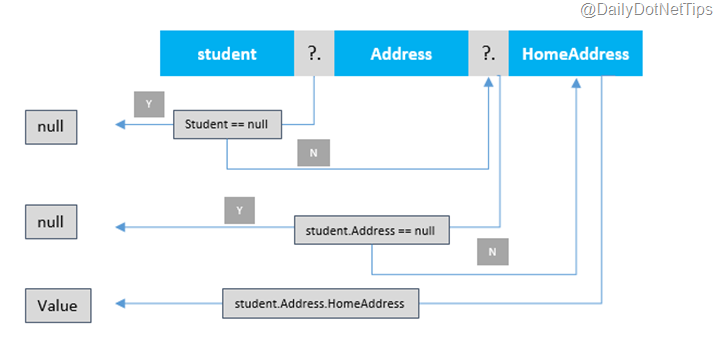在引入nameof操作符的同时,C# 6.0 还引入了Null-Conditional操作符。它使开发者可以检查object引用链中的null值。这个null-conditional 操作符写作"?.",会在引用链中任一个为null时返回null。这避免了对每一级进行null检查。
假设我们有一个class为Student,它有一个属性Address,同时这个属性的type是一个名为Address的Class。现在我们用下面的代码块来print它的HomeAddress。

if (student != null && student.Address != null) { WriteLine(student.Address.HomeAddress); } else { WriteLine("No Home Address"); }
我们可以看到,为了避免null-reference exception,我们不得不检查student是否为null,然后检查student.Address是否为null。
现在,上面的代码会通过使用null-conditional(?.)操作符来重写成:
WriteLine(student?.Address?.HomeAddress ?? "No Home Address");
是不是很帅?不必分别检查每个对象,使用“?.”我们可以同时检查整个引用链。任意一级为null,它都会返回null。下面的图片解释了“?.”是怎么工作的。

它也可以和方法协同工作,特别是当我们trigger event的时候。比如下面的代码

if (AddressChanged != null) { AddressChanged (this, EventArgs.Empty); }
使用?.我们可以这样写。
AddressChanged ?.Invoke(this, EventArgs.Empty)
